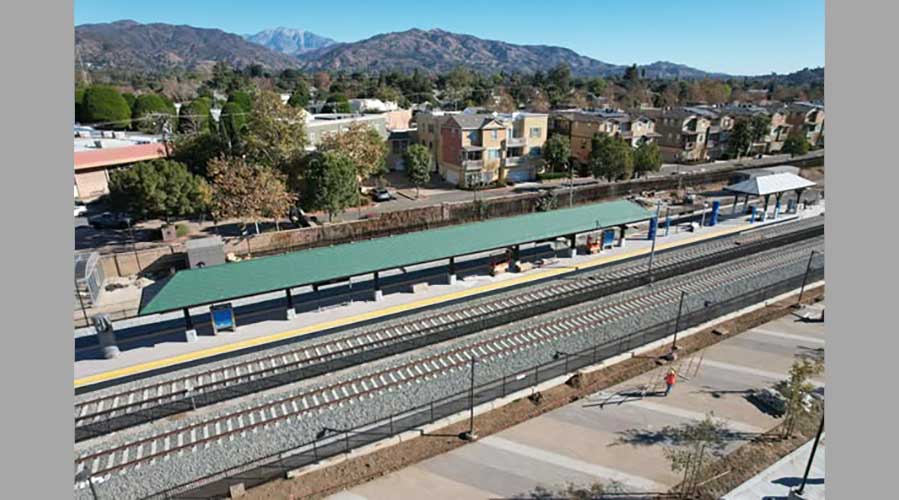Newsletter Sign Up
Stay updated on news, articles and information for the rail industry
Stay updated on news, articles and information for the rail industry
Rail News Home
Rail Industry Trends
Rail News: Rail Industry Trends
1/25/2011
Rail News: Rail Industry Trends
Alaska Railroad opposes EPA's position on bridge's location
advertisement
The Alaska Railroad Corp. (ARRC) has asked the U.S. Army Corps of Engineers to reject the U.S. Environmental Protection Agency's (EPA) "attempt to impede a permit for construction of a bridge over the Tanana River near Salcha," railroad officials said Monday in a prepared statement.
ARRC wants the Corps of Engineers to grant the permits under the Clean Water Act so the railroad can begin work on the northern rail extension (NRE) project to Delta Junction.
The project is designed to extend the line from Eielson Air Force Base to Delta Junction in four phases, which would provide year-round access to military training grounds on the south side of the Tanana River after the bridge is completed. ARRC officials said recent EPA actions threaten to delay and possibly eliminate Phase 1 of the NRE, effectively canceling the entire project."
At the Surface Transportation Board's (STB) direction, the NRE project has been under environmental review since 2005, with an environmental impact statement (EIS) published in fall 2009. The STB's formal record of decision on Jan. 5, 2010, approved the route to Delta Junction, which ARRC interpreted as a green light to begin filing the proper permits for the first phase's design and engineering.
However, in 2009, the EPA concurred with the STB's considered alternatives and the selection of Salcha as the Tanana River crossing point as described in the draft EIS. The EPA "suddenly reversed" its position in November and December letters to the Corps of Engineers "and elected to impede the adjudication of the Corps of Engineers’ permitting process by challenging these fundamental findings of the EIS," according to ARRC.
"To say we are disappointed in the EPA’s recent actions would be an understatement," said ARRC Vice President of Engineering and Chief Engineer Tom Brooks.
ARRC wants the Corps of Engineers to grant the permits under the Clean Water Act so the railroad can begin work on the northern rail extension (NRE) project to Delta Junction.
The project is designed to extend the line from Eielson Air Force Base to Delta Junction in four phases, which would provide year-round access to military training grounds on the south side of the Tanana River after the bridge is completed. ARRC officials said recent EPA actions threaten to delay and possibly eliminate Phase 1 of the NRE, effectively canceling the entire project."
At the Surface Transportation Board's (STB) direction, the NRE project has been under environmental review since 2005, with an environmental impact statement (EIS) published in fall 2009. The STB's formal record of decision on Jan. 5, 2010, approved the route to Delta Junction, which ARRC interpreted as a green light to begin filing the proper permits for the first phase's design and engineering.
However, in 2009, the EPA concurred with the STB's considered alternatives and the selection of Salcha as the Tanana River crossing point as described in the draft EIS. The EPA "suddenly reversed" its position in November and December letters to the Corps of Engineers "and elected to impede the adjudication of the Corps of Engineers’ permitting process by challenging these fundamental findings of the EIS," according to ARRC.
"To say we are disappointed in the EPA’s recent actions would be an understatement," said ARRC Vice President of Engineering and Chief Engineer Tom Brooks.


 LRW Honors Amtrak’s Acheson As Railway Woman Of The Year
LRW Honors Amtrak’s Acheson As Railway Woman Of The Year
 From Editor-In-Chief Foran: Of Gender Equity And Inclusion
From Editor-In-Chief Foran: Of Gender Equity And Inclusion
 Spotlight On Some Of Today’s Rail Safety Products
Spotlight On Some Of Today’s Rail Safety Products
 Women of Influence in Rail eBook
Women of Influence in Rail eBook
 railPrime
railPrime







